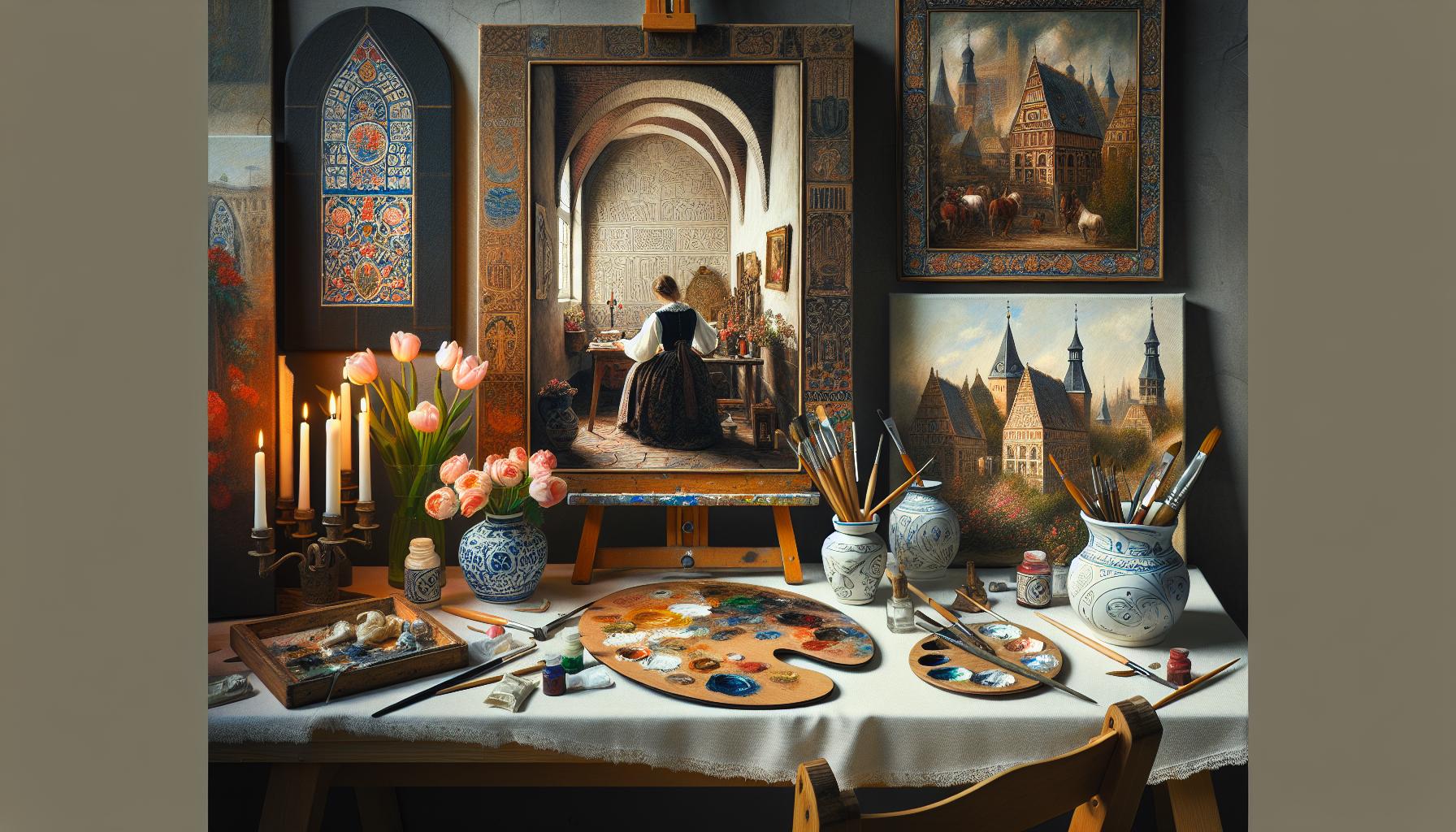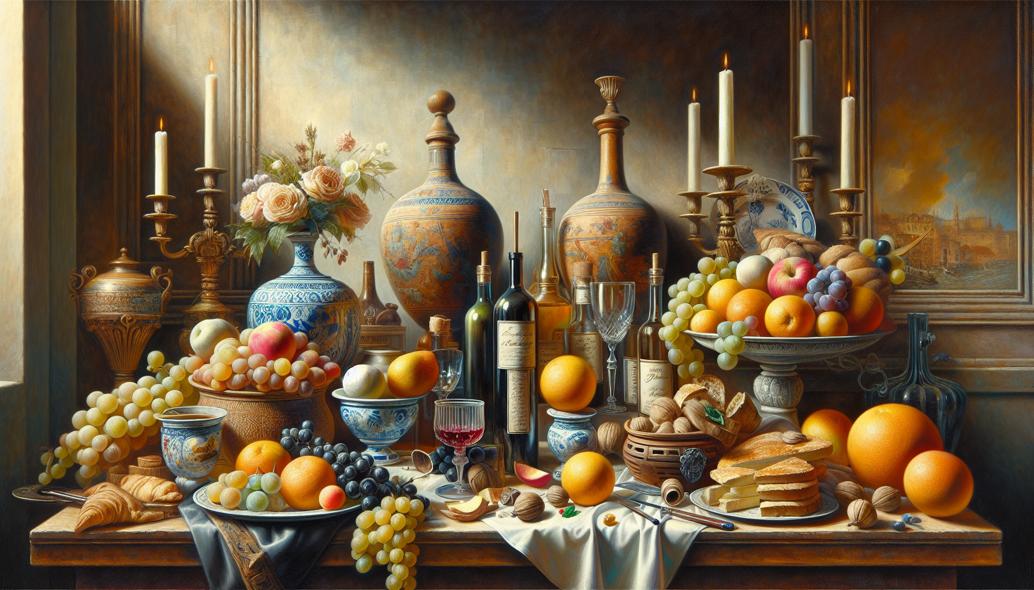Mastering Realism with Grisaille Techniques in Oil Painting
Unlock the secrets of the Grisaille technique in oil painting to master realism. Dive into this classical method and transform your artworks with depth and subtlety. Discover the timeless skills of the old masters today!

Mastering Realism with Grisaille Techniques in Oil Painting
Oil painting has long been revered for its rich textures, vibrant colors, and unparalleled depth. Among the myriad of methods available to artists, the Grisaille technique stands out as a masterful approach that harks back to classical techniques of the old masters. Grisaille, a term derived from the French word for "gray," represents painting in monochrome, typically in shades of gray, to create highly detailed underpaintings. This method, when perfected, can be a powerful tool in an artist's repertoire for achieving realism in oil.
Understanding the Grisaille Technique
Grisaille is more than just painting in shades of gray. It is an essential foundation layer in the classical painting process, setting the stage for vibrant colors to be applied later. By focusing solely on value (the lightness or darkness of tones), artists can develop an acute sensitivity to the play of light and shadow — the backbone of realistic depiction.
Historically, this technique served multiple purposes. It was used as a detailed sketching phase, allowing artists to draft and correct compositions without the distraction of color. Artists like Jan van Eyck and Leonardo da Vinci employed grisaille to achieve transcendent realism in their works.
While modern artists often seek shortcuts to expedite the creative process, mastering this monochrome painting method requires discipline and patience, akin to classical techniques of old. However, the benefits are immeasurable.
Setting Up For Grisaille: Materials and Tips
Before embarking on your realism in oil journey with the Grisaille technique, ensure you’re equipped with the right materials and set up correctly. Here are some essential oil painting tips to keep in mind:
- Choose Your Canvas Wisely: Start with a well-primed canvas. The texture and absorbency will impact the application of paint and the final output.
- Quality Oil Paints: Investing in high-quality oil paints is crucial. For grisaille, focus on a limited palette — titanium white, ivory black, and perhaps an earth tone like raw umber to introduce nuanced warmth.
- Brush Selection: Use a variety of brushes to achieve different effects. Flat brushes for broad strokes and round brushes for detail work can be invaluable.
- Mediums and Solvents: They can control the paint's consistency and help in layering. A classic choice would be linseed oil, paired with a refined turpentine or odorless mineral spirits.
The Process of Grisaille: Step-by-Step Guide
- Preparation and Sketching: Draft your composition onto the canvas using a soft graphite pencil. This initial sketch is a loose guide to follow as you begin painting.
- Mix and Apply Medium Tones: Begin by mixing a mid-gray color. Delicately block in the form and define the shapes with this mid-tone. This base will guide the subsequent layers.
- Develop the Shadows: Using a darker gradient, focus on establishing the shadowed areas. Work gradually, ensuring each layer is fully dry before applying additional pigment. This approach provides depth and perspective.
- Lighting and Highlights: Introduce lighter shades to illuminate areas and accentuate highlights. By carefully modulating light, you can simulate three-dimensional form on a flat surface.

- Refining Details: As your painting develops, move onto smaller brushwork to carve out finer details. This stage demands patience and precision.
- Glazing with Color (if desired): Once your monochrome painting is complete and dry, you may choose to add color through glazing. Thin layers of transparent colors applied over the grisaille can bring a stunning vibrancy and richness to the piece without obscuring the meticulous work underneath.
Advanced Techniques and Troubleshooting
Achieving mastery in the Grisaille technique, like any art form, involves flexibility and problem-solving. When aiming for realism in oil, pay attention to the following expert tips:
- Understanding Values: A common challenge in grisaille is judging values correctly. It’s crucial to step back often to view your work from a distance and ensure the visual depth is cohesive.
- Avoiding Overworking: It can be tempting to perfect an area by overworking it with too many layers. Practice restraint, allowing each layer to contribute organically to the composition.
- Correcting Mistakes: Mistakes are inevitable. Use a mahl stick to stabilize your hand and apply corrections precisely without compromising other areas of your painting.
The Historical Significance and Today’s Application
The Grisaille technique isn’t merely a historical curiosity; it remains a cornerstone of classical techniques that modern artists adapt for their creative processes. It offers a robust scaffold for any artistic style and is indispensable for artists who prioritize a piecemeal construction of their pieces through careful planning and execution.
In contemporary contexts, grisaille can also be integrated into digital art, illustrating its versatility and timelessness.
Conclusion
Mastering realism through the Grisaille technique in oil painting is an endeavor that rewards dedication with extraordinary results. By embracing this monochrome painting approach, today's artists can draw not only from classical techniques but also from a deep well of artistic tradition, enhancing both their technical skill and creative expression. For those serious about achieving a lifelike depiction in their oil paintings, investing time to perfect the grisaille method can set a solid foundation for a lifetime of artistic exploration.
Whether you're a seasoned professional or a burgeoning artist seeking oil painting tips, the grisaille technique opens a world of possibilities and elevates the potential of your creativity to new heights.
